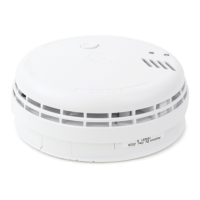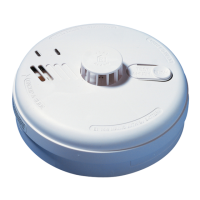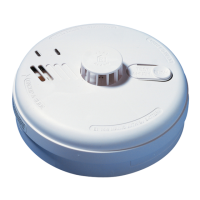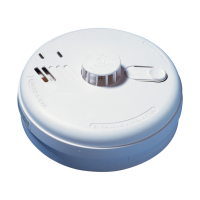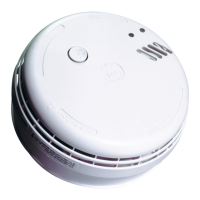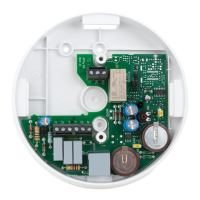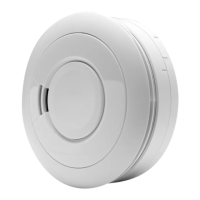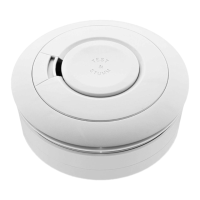7. NUISANCE/FALSE ALARMS
When sure that it is just a nuisance/false alarm, simply
press the test/silence button briefly on the Alarm to
silence the unit for 10 minutes.
If, when the alarm goes off, there is no sign of smoke,
heat or noise to indicate that there is a fire, you should
get your family into a safe place, before you start
investigating.
Check the house carefully in case there is a small fire
smouldering somewhere.
Check whether there is some source of smoke or
fumes, for example cooking fumes being drawn past the
Smoke Alarm by an extractor.
If there are frequent nuisance/false alarms it may
be necessary to re-locate the device away from the
source of the fumes or replace an Ionisation Alarm
with an Optical Alarm. If for some reason the alarm
continues to sound without smoke or heat being present
(due to insect infestation or contamination build-up for
example) the units can be silenced by disconnecting
the mains power and removing the unit - see “ALARM
REMOVAL” section.
If cleaning the Alarm does not correct the problem it can
be returned to the manufacturer for repair or replacement
- see “GETTING YOUR ALARM SERVICED” section.
Silence Feature
All the Smoke/Heat Alarms have a combined Test/
Silence Button to help you control nuisance/false
alarms.
1. To silence a nuisance/false alarm, press the Test/
Silence Button located on the cover. The Alarm will
automatically switch to a reduced sensitivity condition
for a 10 minute period (very large levels of smoke from
a nearby fire will override the Silence period).
The unit will flash the red light every 10 seconds
(instead of the normal 40 seconds) to indicate the
sensitivity is reduced.
On interconnected Alarms, pressing the Test/Silence
Button on the one sensing smoke (i.e. the one with the
red light flashing every second) will silence all alarms.
Pressing the Silence Button on any other Alarm will not
silence the alarm.
2. The unit will reset to normal sensitivity at the end of
the silenced period.
8
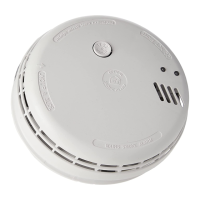
